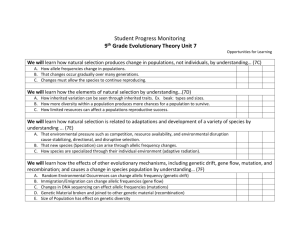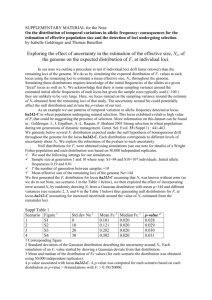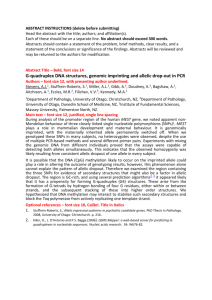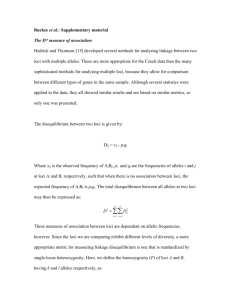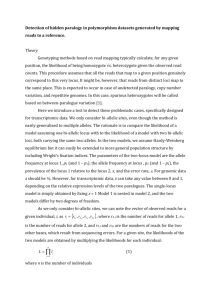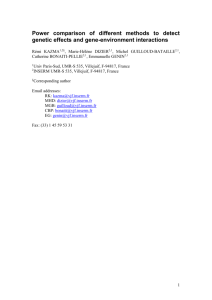Polygenic variation maintained by balancing selection:
advertisement
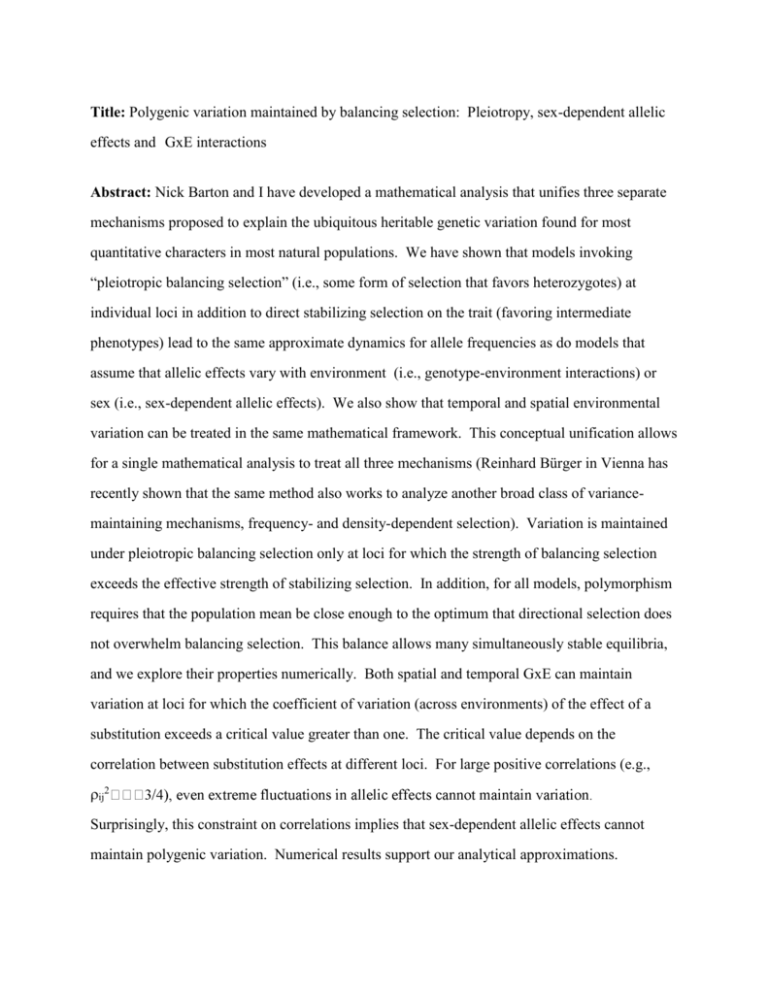
Title: Polygenic variation maintained by balancing selection: Pleiotropy, sex-dependent allelic effects and GxE interactions Abstract: Nick Barton and I have developed a mathematical analysis that unifies three separate mechanisms proposed to explain the ubiquitous heritable genetic variation found for most quantitative characters in most natural populations. We have shown that models invoking “pleiotropic balancing selection” (i.e., some form of selection that favors heterozygotes) at individual loci in addition to direct stabilizing selection on the trait (favoring intermediate phenotypes) lead to the same approximate dynamics for allele frequencies as do models that assume that allelic effects vary with environment (i.e., genotype-environment interactions) or sex (i.e., sex-dependent allelic effects). We also show that temporal and spatial environmental variation can be treated in the same mathematical framework. This conceptual unification allows for a single mathematical analysis to treat all three mechanisms (Reinhard Bürger in Vienna has recently shown that the same method also works to analyze another broad class of variancemaintaining mechanisms, frequency- and density-dependent selection). Variation is maintained under pleiotropic balancing selection only at loci for which the strength of balancing selection exceeds the effective strength of stabilizing selection. In addition, for all models, polymorphism requires that the population mean be close enough to the optimum that directional selection does not overwhelm balancing selection. This balance allows many simultaneously stable equilibria, and we explore their properties numerically. Both spatial and temporal GxE can maintain variation at loci for which the coefficient of variation (across environments) of the effect of a substitution exceeds a critical value greater than one. The critical value depends on the correlation between substitution effects at different loci. For large positive correlations (e.g., ij2 Surprisingly, this constraint on correlations implies that sex-dependent allelic effects cannot maintain polygenic variation. Numerical results support our analytical approximations.



